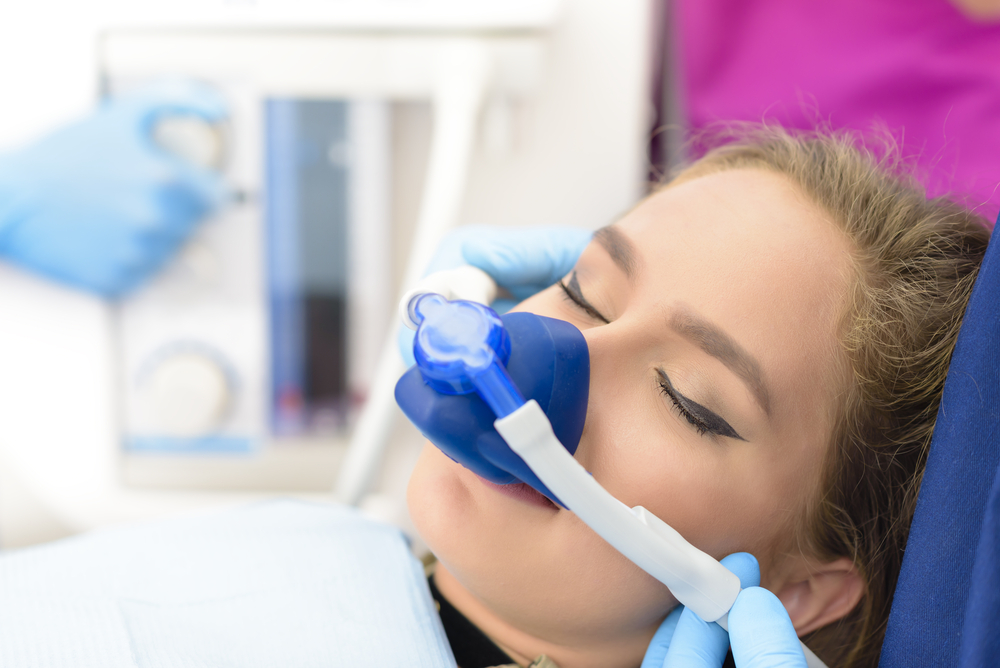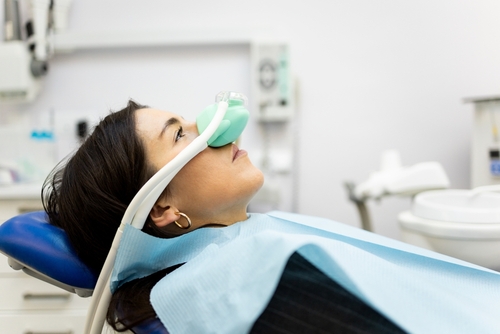Are you one of those people who dread going to the dentist? Does the thought of a dental procedure make you feel anxious and fearful? If so, you're not alone. Many individuals experience dental phobia, which can prevent them from seeking the necessary dental care. However, thanks to advancements in dentistry, there is a solution that can help alleviate your anxiety and make your dental experience more comfortable and relaxed - sedation dentistry.
In this comprehensive guide, we will explore the world of sedation dentistry to help you better understand how it can transform your dental visits. We'll delve into the different levels of sedation, the various types of sedation techniques used in dentistry, and the benefits and considerations associated with each. So, sit back, relax, and let's embark on a journey to discover how you can truly relax in the dentist's chair.

Understanding Sedation Dentistry
Sedation dentistry involves the use of medications to help patients relax during dental procedures. It is often referred to as "sleep dentistry," although it's important to note that patients are usually awake, except in cases where general anaesthesia is administered. The level of sedation used depends on the severity of the patient's anxiety or fear.
The different levels of sedation in dentistry include:
- Minimal sedation: In this state, patients are awake but relaxed.
- Moderate sedation: Formerly known as "conscious sedation," patients may slur their words and have limited memory of the procedure.
- Deep sedation: Patients are on the edge of consciousness but can still be awakened if necessary.
- General anaesthesia: Patients are completely unconscious during the procedure.
Types of Sedation Techniques
Dentists utilise various sedation techniques to ensure their patients' comfort and relaxation. Let's explore the different types of sedation commonly used in dentistry:
1. Inhaled Minimal Sedation
One of the most commonly used sedation techniques is inhaled minimal sedation. This method involves the administration of nitrous oxide, also known as "laughing gas," combined with oxygen through a mask placed over the patient's nose. Nitrous oxide helps induce relaxation, and the dentist can control the level of sedation throughout the procedure. The effects of nitrous oxide wear off quickly, making it possible for patients to drive themselves home after treatment.
2. Oral Sedation
Oral sedation is another popular method used in sedation dentistry. Depending on the dose administered, oral sedation can range from minimal to moderate. For minimal sedation, patients are typically prescribed a pill such as Halcion, which is similar to Valium. The pill is taken about an hour before the dental procedure, inducing drowsiness while keeping the patient awake. In some cases, a higher dose may be given for moderate sedation, causing patients to become groggy enough to fall asleep during the procedure but easily awakened with a gentle shake.
3. IV Moderate Sedation
IV moderate sedation involves the administration of sedative medication directly into the patient's vein. This method allows the sedative to take effect more quickly, and the dentist can adjust the level of sedation as needed throughout the procedure.
4. Deep Sedation and General Anaesthesia
For more complex dental procedures or patients with severe dental anxiety, deep sedation or general anaesthesia may be necessary. During deep sedation or general anaesthesia, patients are either almost unconscious or completely unconscious, respectively. These methods ensure that patients are deeply asleep throughout the procedure. However, it's important to note that general anaesthesia carries higher risks and requires careful monitoring.
Who Can Benefit from Sedation Dentistry?
Sedation dentistry is a valuable option for individuals who experience significant fear or anxiety that prevents them from seeking dental care. Additionally, it can benefit patients who:
- Have a low pain threshold
- Struggle to remain still in the dentist's chair
- Have highly sensitive teeth
- Experience a strong gag reflex
- Require extensive dental work to be completed in a single visit
Children who are fearful of dental visits or refuse to cooperate during appointments can also benefit from sedation dentistry. Nitrous oxide is often used safely in paediatric dentistry, while oral sedation may be administered by specially trained paediatric dentists.

Ensuring Safety and Qualification
While sedation dentistry offers numerous benefits, it's crucial to ensure the safety and qualification of your dentist before undergoing any sedation procedure. Here are some essential considerations:
- Medical history and medication: Your dentist should review your medical history and determine if you are a suitable candidate for sedation. It's important to disclose any current medications you are taking to avoid potential interactions.
- Dose and FDA recommendations: Inquire about the appropriate sedative dose for your age and health condition, ensuring it aligns with the recommendations of the FDA.
- Dentist's training and experience: Verify the level of training and experience your dentist has in administering sedation. The more procedures a dentist has performed, the more confident you can feel in their expertise.
- Risk assessment and informed consent: Your dentist should provide you with a form that outlines the risks associated with the procedure. Take the time to carefully review and discuss any uncertainties or questions you may have.
- Monitoring and emergency preparedness: During the procedure, your dentist should adhere to the guidelines set by the American Dental Association, continuously monitoring your vital signs. Additionally, they should have oxygen and reversal medications readily available in case of any complications.
Each state's dental board regulates the use of sedation techniques, requiring dentists to obtain proper permits. When selecting a dentist for sedation dentistry, it's essential to choose one who adheres to these regulations and prioritises patient safety.
Experience Top-Quality Care With Mulgrave Dental Group
Sedation dentistry has revolutionised the dental experience for individuals who struggle with fear and anxiety. By utilising various sedation techniques, dentists can help patients relax, ensuring a more comfortable and stress-free dental visit. Whether it's inhaled minimal sedation, oral sedation, IV moderate sedation, or deep sedation/general anaesthesia, the right level of sedation can be tailored to meet each patient's unique needs.
If you've been avoiding dental treatment due to anxiety or fear, it may be time to consider sedation dentistry. Consult with a qualified dentist who specialises in sedation techniques, and take the first step toward achieving optimal oral health without the stress and anxiety that often accompany dental visits. Remember, your oral health is essential, and with sedation dentistry, you can finally relax in the dentist's chair and receive the care you deserve.
At Mulgrave Dental Group, we offer a variety of safe and effective options to help you relax during your dental treatments. Whether you need a simple check-up or a more complex dental work, we are here to ensure that you feel comfortable and relaxed. If you have any questions or concerns, our team is here to help. Call us on (03) 9562 5156 or book an appointment online.
Please note that while sedation dentistry offers numerous benefits, it may not be suitable for everyone. Consult with your Mulgrave Dental Group dentist to determine if sedation dentistry is right for you.
Smile Makeover Client
Your Healthier Smile Awaits
Whether you're looking to improve your dental health or enhance your smile, we're here to help. Book an appointment with Mulgrave Dental Group today!
Book Now



